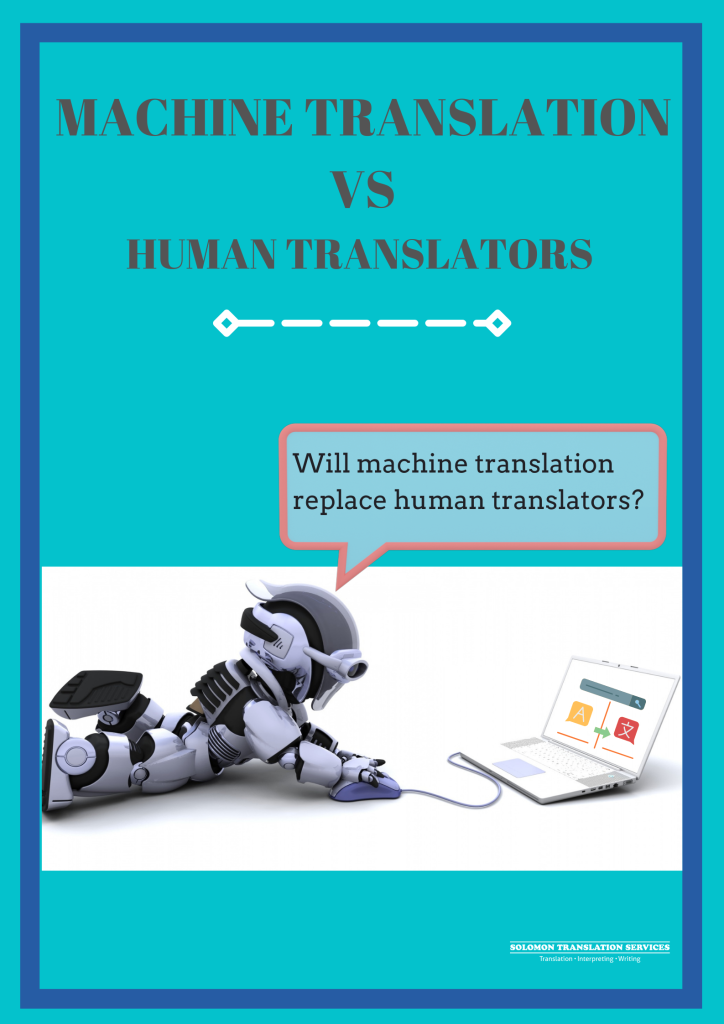MACHINE TRANSLATION VS HUMAN TRANSLATORS: STRIKING A BALANCE

Language has always been a fascinating concept. What’s even more fascinating is having to translate one language to a completely different one, which in most cases have no relation or characteristics in common. Imagine translating Chinese characters into English alphabets. That is a difficult task but not an impossible one. Translation simply allows people to bridge linguistic and cultural gaps, fostering understanding and communication across the globe. Traditionally, human translation has been the preferred method, as it offers the ability to comprehend nuances, context, and cultural intricacies. However, with the progress we’ve witnessed in technology, the introduction of artificial intelligence (AI) has significantly shifted the landscape to machine translation.
Ideally, machine translation will be impossible without human translators. The existence of human translators and their work support the database that is needed for machine translation to carry out tasks. Human translation showcases the human touch and expertise, ensuring accuracy, fluency, and cultural sensitivity. Human translators possess an in-depth understanding of the source and target languages, enabling them to capture the essence of the text and convey the intended meaning effectively. They can navigate complex sentence structures, idioms, and colloquialisms, delivering high-quality translations tailored to specific audiences and domains.
This is not to condemn the nature of machine translation. Machine translation on the other hand has revolutionised the translation industry by automating the process, enabling faster and more accessible translations.This is to say that human translators in a way need machine translation to cover more ground and work faster. Machine translation algorithms, powered by artificial intelligence, rapidly process vast amounts of data, producing immediate results. This technology has made great strides in providing serviceable translations for basic communication needs.
Yes, technology is advancing quicker than we anticipate but can it catch up or surpass what humas have created in the translation industry? Unlike human translators, machine translation falls short in capturing the cultural nuances of language. This difficulty is found in contexts such as slangs and jargons which are peculiar to a group of people or a region. Machine translation often produces literal and inaccurate translations. When translating a joke for instance, machine translation is not equipped with the ability to translate the humour of the joke because of its literal nature. Human translators on the other hand are able to manipulate this type of translation by applying the appropriate techniques and manipulating the text to fit context in the target language – an ability lacking in the machine world. The human touch in translation is necessary for professional documents, marketing materials, or literary works. Additionally, machine translation struggles with ambiguity and context, leading to errors that can distort meaning and create confusion.
In light of these considerations, the ideal approach lies in striking a balance between human translation and machine translation. Leveraging the strengths of both methods can optimize efficiency and accuracy. Human translators can use machine translation as a starting point, employing it as a tool to enhance productivity and streamline the translation process. They can then refine and polish the output, injecting the necessary linguistic and cultural expertise to deliver top-quality translations.
Ultimately, human translation and machine translation are not mutually exclusive; they are complementary. While machines can assist in expediting translation tasks, it is the human touch that ensures precision, cultural sensitivity, and the ability to adapt to the specific requirements of each project. By embracing this collaborative approach, we can embrace the advantages of technology while upholding the integrity of human expertise, forging a path towards effective communication in our increasingly interconnected world.
**N/B: In the spirit of striking a balance, this post was written by both machine translation and human translator.

